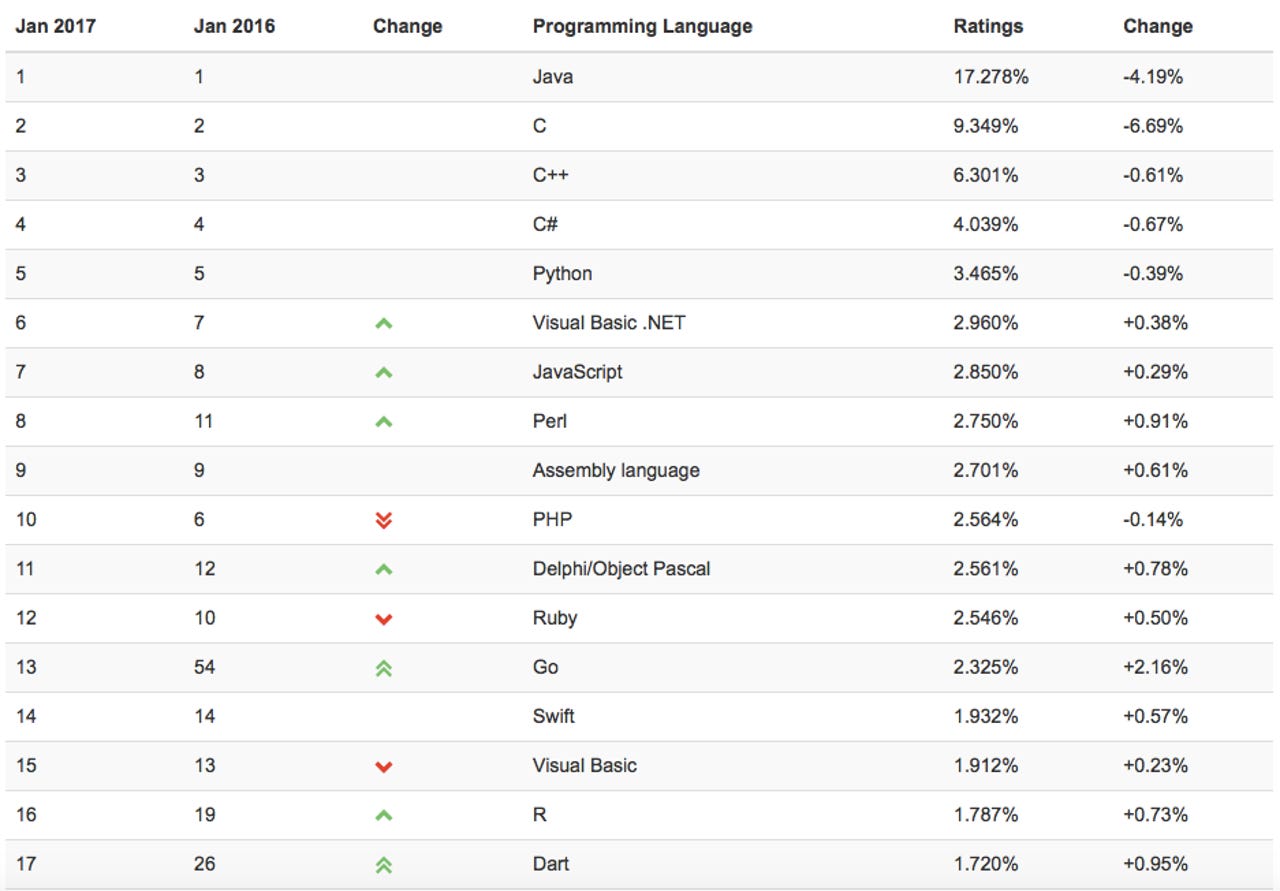Google's Go beats Java, C, Python to programming language of the year crown


Google Go leapfrogged 40 languages in the Tiobe Index last year.
Google's Go is the programming language of the year, according to the long-running Tiobe Index, a search-based ranking that gauges the popularity of top and emerging languages among developers.
Rather than acknowledging the most widely used language, the firm focused its Programming Language of 2016 award on the language that has seen the fastest growth in popularity and hence where developers might want to strengthen their programming skills.
The ratings are based on popular searches on Google, Bing, Yahoo, Wikipedia, Amazon, YouTube, and Baidu.
According to Tiobe, Go has been the biggest mover over the past year with "hardly any competition", gaining 2.16 percent in popularity and rising from 54th position in January 2016 to 13th in January 2017. It was followed by Dart, a Google-backed language, and Perl, which grew 0.95 percent and 0.91 percent, respectively.
"The main drivers behind Go's success are its ease of learning and pragmatic nature. It is not about theoretical concepts such as virtual inheritance and monads but about hands-on experience," said Tiobe, which says it's seeing an uptick in customers adopting Go in an industrial setting.
Google created Go in 2007 to accelerate programming on its own infrastructure and released it to the wider world in 2009. Go has since has been used to build popular projects such as Docker.
The top five languages remained stable across the period, with Java leading, followed by C, C++, C#, and Python. However, C has suffered a dramatic decline in popularity, falling from 16 percent in January 2016 to nine percent today, as did Java, which fell 4.19 percentage points over the year to 17 percent.
Microsoft's Visual Basic .NET meanwhile grew 0.38 percentage points to 2.96 percent, rising from seventh to sixth place, followed by JavaScript and Perl.
Tiobe expects next year's top candidates to be Apple's Swift language, Julia, and the Microsoft-maintained TypeScript. Tiobe notes that TypeScript is "very popular in the commercial industry", seeing a rise from 169 last January to 137 this month.